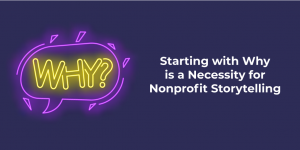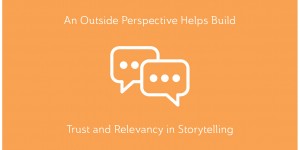1. Your mission is not your story
2. Move past programs
3. Focus on developing a narrative
4. Your story is rooted in a core message
- Your Focus: The core challenge you address as an organization. It’s why you exist. It’s your purpose.
- Your Strength: How you fulfill your mission and address your focus. It’s how do things a more proprietary sense.
- Your Impact: What you do. The end result of your work which can take shape as programs, outcomes, and success stories.
Your core message will serve as a filter and reference point as you begin to write and identify stories. Refer back to this message and ask yourself if the story you’d like to tell addresses at least one of these elements. Though stories evolve, your core message is your thesis and that should always remain the same.
5. Everyone is a potential touchpoint
But why does this matter? Well, everyone in your organization from the top down serves as a potential touch point with people from the outside. Each time someone representing your organization comes in contact with an individual on the phone, in the office or at an event, there’s an opportunity to make a meaningful connection that can yield much needed support. So make sure everyone is on the same page when it comes to your core message so you’ve got the tightest narrative that leaves no room for misunderstanding and prevents a poor public perception of your organization.
6. Be proactive, not reactive
The Wrap Up
The biggest part of developing a meaningful narrative for your organization is changing your behavior and approach. These first few lessons will help you lay the foundation for the eventual stories you’ll create. Next week we’ll get into some of the tactical ways to help you tell your story, like acquiring testimonials and leveraging the real life experiences of your beneficiaries to demonstrate impact.
You Might Also Enjoy:
+ There’s Always Room for a Story
+ The Great Fundraising Balancing Act
+ The 4 Components of a Fundraising Foundation
Like what you see? Stay in touch!











